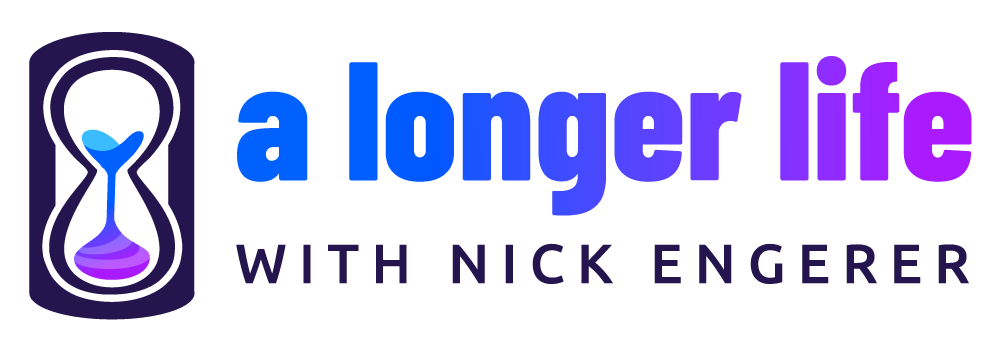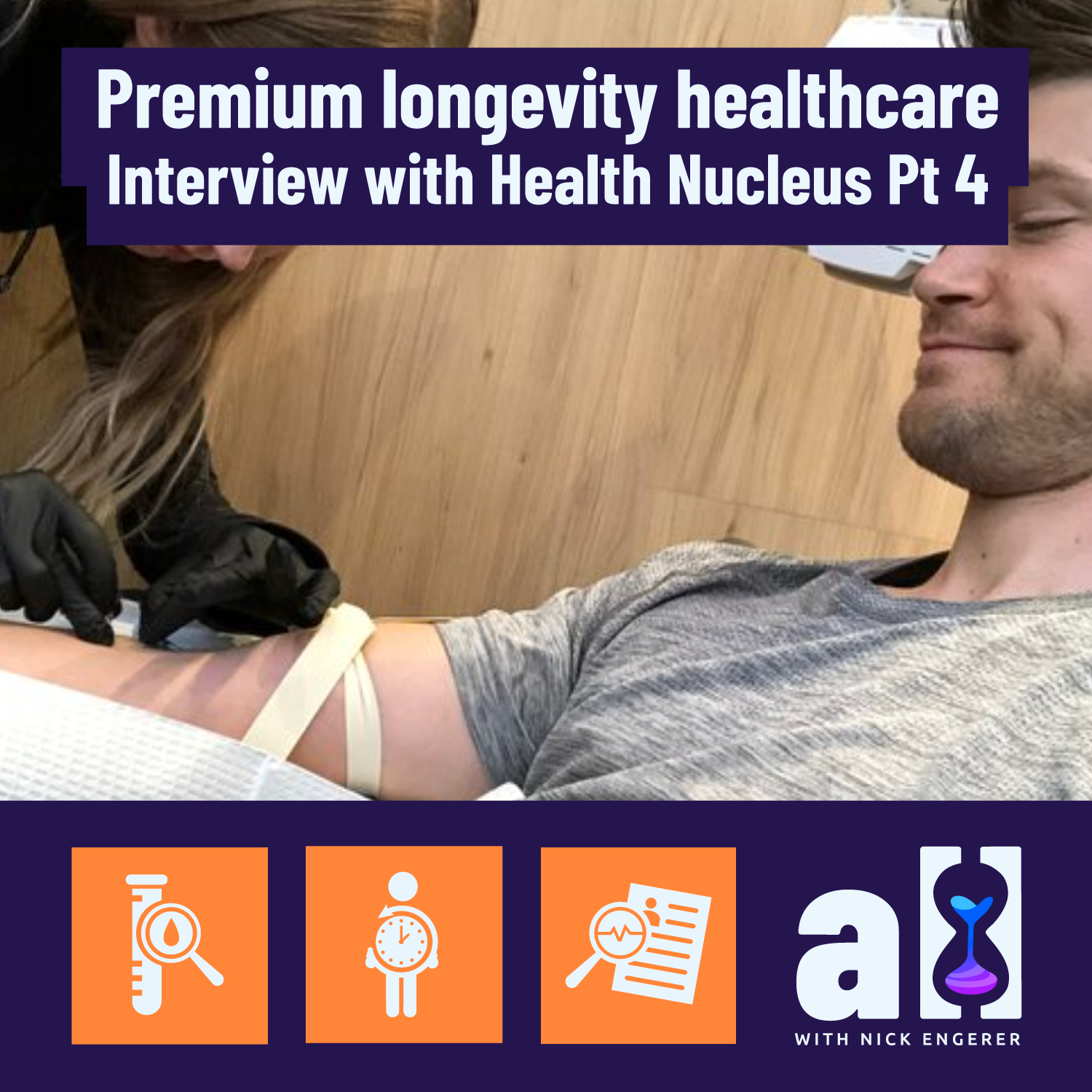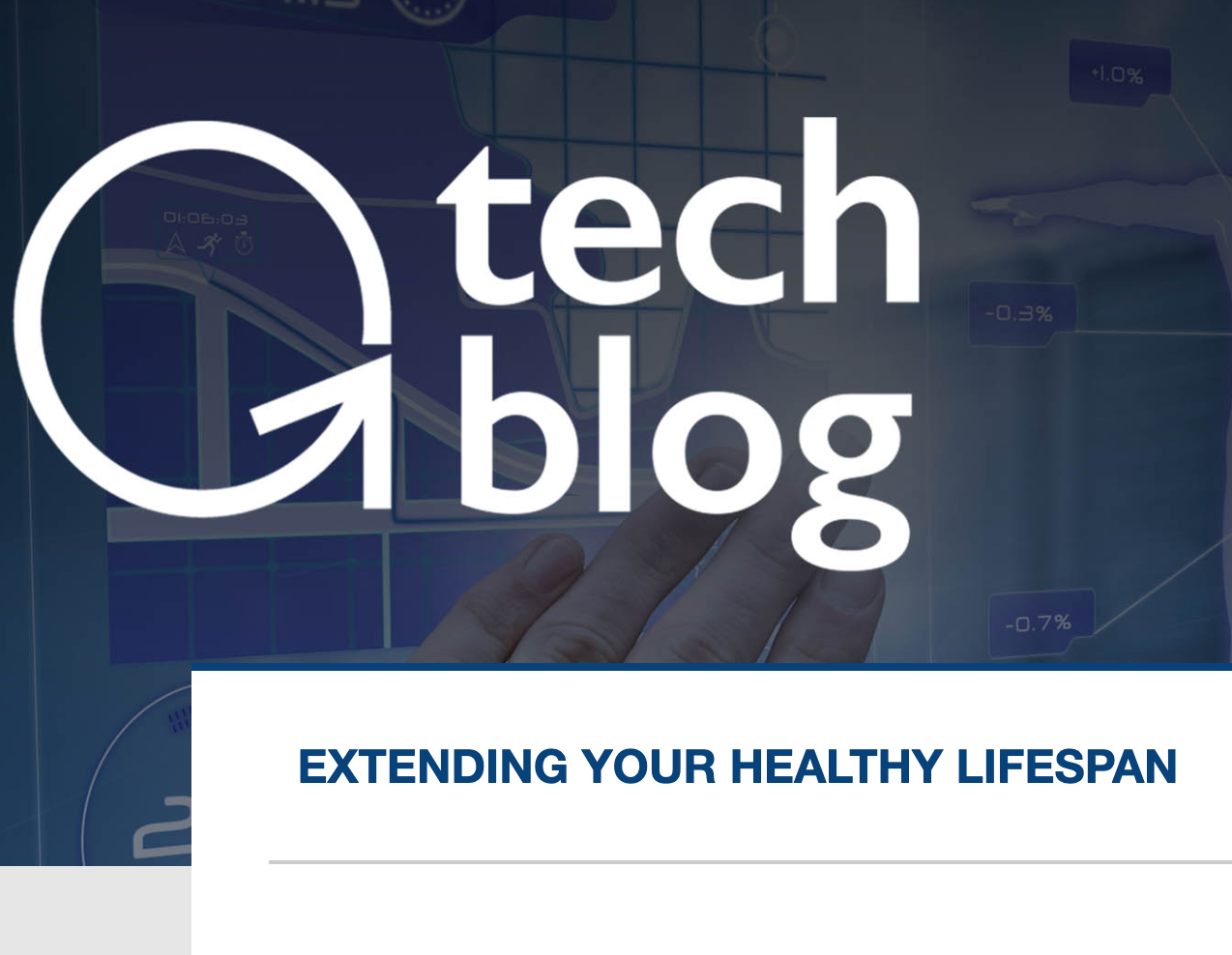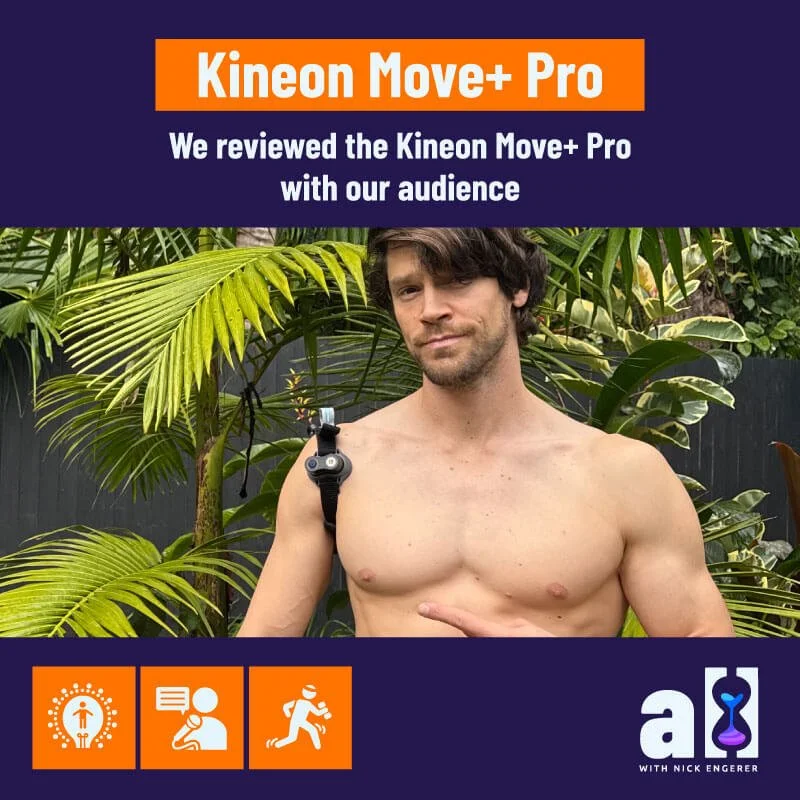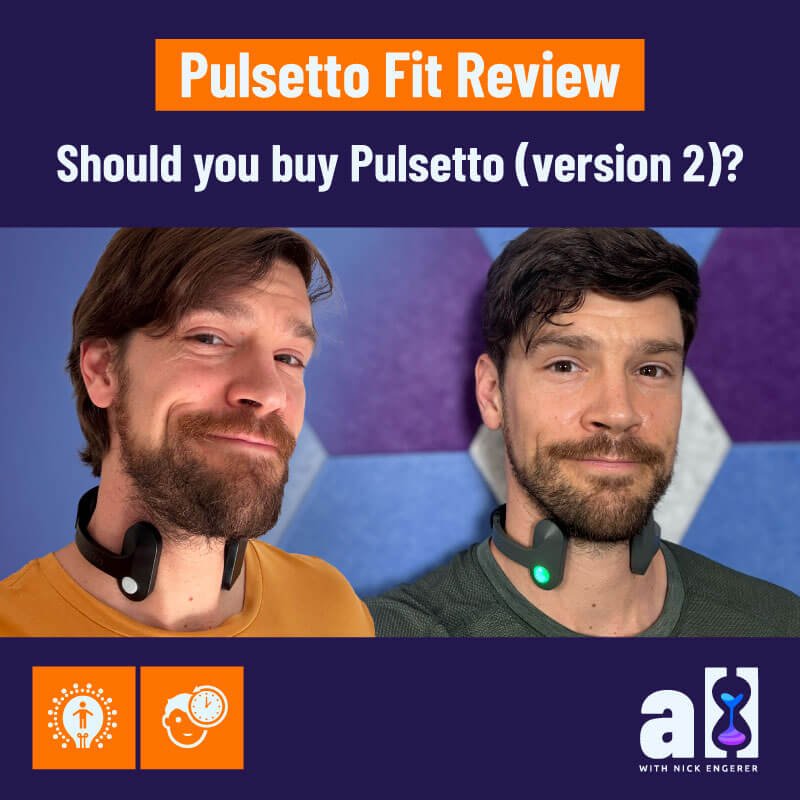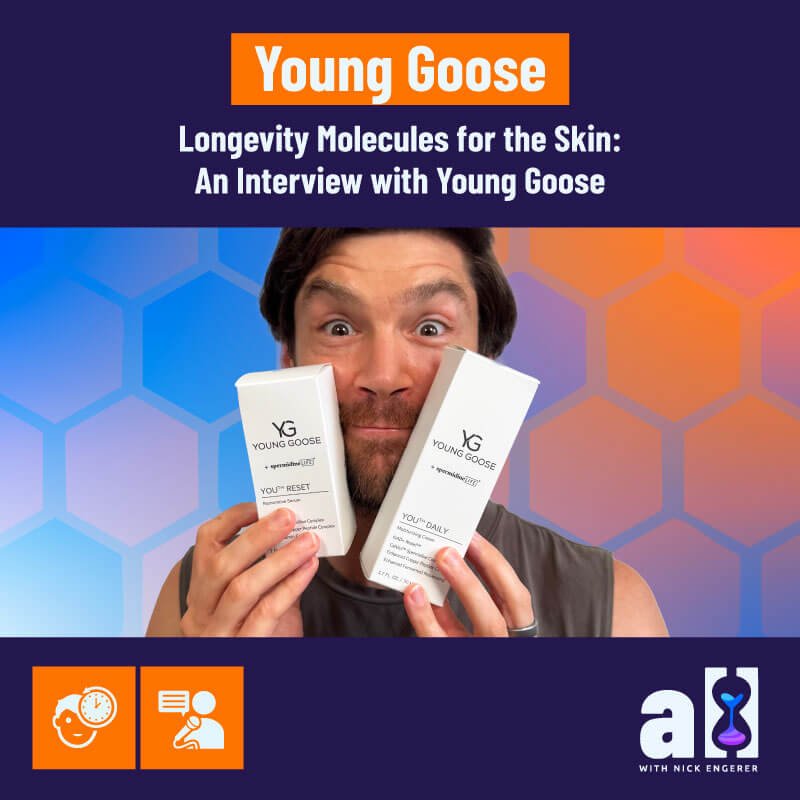Premium longevity healthcare - Interview with Health Nucleus Part 4
In this post you’ll learn about:
The personalised nature of a Health Nucleus visit
A vision for getting tens to hundreds of thousands of patients through this proactive healthcare provider
Why Dr. Duchicela likes A Longer Life :-)
Part 4 - Personalised healthcare and the Health Nucleus vision
Previous Posts: Part 1 - Part 2 - Part 3
A Longer Life (ALL):
Q: I was curious if you could remind me of how many medical professionals interact with me directly or with my data as an outcome of each Health Nucleus visit?
One of my favourite aspect of a Health Nucleus visit is the number of experts reviewing my medical data, to guide my health outcomes. Here I am getting my blood drawn in January 2020.
Dr Duchicela: Dr Duchicela:
[laughs] There’s a lot of people let’s just say, with the caveat being that everything is very private and HIPAA compliant, but in terms of clinicians, it’s a physician like myself trained in family medicine and preventative medicine who would be looking over your report results, you’ll have at least one radiologist and a lot of times two radiologists because we do double checks where they check each other, which I think is good practice. You’ll have a cardiologist looking at your heart scan, the cardiac MRI is read by a cardiologist and not the radiologist and then with the genetics you will have the clinical genetics team reviewing any significant findings that you had and if there is something that was flagged, a lot of times what they’ll do is delve into the clinical history a bit more and talk with myself or one of the physicians.
So by the time your return of results session comes around you’ll have a lot of different clinicians looking at your data and analysing your data and there’s wide communication between the teams as well. If there is a significant finding we will also have a genetic counselor as part of the return of results session as well. A lot of different clinicians just for one person which is pretty amazing, I think it’s pretty cool to be honest that you have so many different disciplines involved in your care, but you kind of need to just because we look at some many different modalities.
Speaking of genetics data - I recalled fondly this A Longer Life post exploring haplogroups and ancestral DNA.
Phlebotemy in action! It had been a few posts since I mentioned how gorgeous the staff at NextHealth are!
LB: Q: If you had to estimate the size of the clinical genetics team, how many folks would be looking at the data - it can be a range.
Dr Duchicela: We have two or three people at least looking into any significant variants or looking into something in the family history that was flagged, and they will do a deeper dive session into it. Two or three clinicians on that team that are dedicated to this.
LB: Q: And then in terms of other folks I’ll work with, there will probably be a phlebotomist, there might be some other nurse staff.
“we are developing is a follow up program where we have a nurse practitioner or a physician reach out every so often at different intervals and say ‘hey, how’s it going?’”
Dr Duchicela: A phlebotomist, a medical assistant, you’ll interact with all the different techs, there’s a different tech for the CT scan, a different tech for the MRI, a nurse for the balance tracking and body metrics collection, and what’s really exciting and what we’re hiring for right now and for the future we’re starting to develop a longitudinal program and we’re going to be hiring a nurse practitioner to actually check in with patients over time.
Right now I think one of the main criticisms of our testing is you come in for an evaluation, you get the testing done, you get the results back and then it’s almost like I’ll see you next year or I’ll see you in two years and there’s not a lot of touch points in between that. So what we’re going to be developing is a follow up program where we have a nurse practitioner or a physician reach out every so often at different intervals and say hey how’s it going, did you follow up with this particular test, we talked to you about this finding on your MRI did you ever go in and get that checked out with the specialist. I think it's just good care to do that and I think it hopefully reengages the patient too and gets them to keep thinking about their health.
It’s really easy after you get your results back you go hard for a month or two or three afterwards, cut out refined carbohydrates and start exercising every day and giving up smoking or cutting back on wine. But after three or four months that motivation kind of wears off which is just normal human nature. So what I would like to see happen more is that we have some sort of continuity program where we reach out throughout the year and say hey how are things going? Let’s check in. How can we support you?
LB: Count me in!
Q: There’s a lot more than just the clinicians and nurses you’ve mentioned behind the scenes at Human Longevity Inc, I know you have an R&D staff who are developing new analytics and new reports. I’ve actually met with some of them and discussed some of the new reports HLI is developing. What does that team look like? And what are some of the exciting things they are working on at the moment
Dr Duchicela: Yeah we have a lot of engineers, we have people who are specialists in imaging and in post processing imaging, machine learning scientists. In terms of what they’re working on, there’s two categories of goals with our products. We want to create products that are firstly accurate and second we want them to be accessible to the lay person, to the general consumer and we also want them to be accessible to physicians too who maybe aren’t trained in genetics or in precision medicine testing. We are continually trying to evolve our reports to make them easier to understand. It is a challenge, to be completely transparent, to take all of this information and to condense it and put it into an easily digestible report.
“We have an imperative to scale and to make this more affordable for people”
It’s hard to do and I think our initial iterations of this, we were essentially writing reports by PhD’s for PhD’s, which I felt we had to change, we needed to make it more accessible. That’s one aspect, how do we visualise the data differently, using the webportal to make it more apparent where people could enact change. The second aspect of that is what is the value of getting the testing through us versus an MRI somewhere else or genetic testing somewhere else and putting it all together on their own. I think it's really the analytics, taking these different modalities building these algorithms that are essentially like a crystal ball and doing it for the top five diseases and being able to dynamically say if you stop drinking alcohol or cut back on smoking your disease risk for alzheimers will go down by X percent. Kind of knowing that and having those numbers and validating them and also getting them FDA approved, that is kind of what we’re looking at in terms of the pipeline.
 |
Side Note: All-up, I estimated that more than 15 unique staff review results or directly support the technology used to asses a patient’s data for a given Health Nucleus visit. Now that’s personalised medicine!
“I believe we have a chance to make 100 years old the new 60… for you, your family, friends and colleagues.” - the transformative purpose of HLI is to make 100 the new 60, and make the technology broadly accessible. Read more on co-founder Peter Diamandis’ Blog
And in scaling this, how do we offer this testing at a lower price point? With the MRI in particular, we’re looking at a lot of things with the MRI and that makes the scan time longer, so how do we develop software that makes the scan time less to make it more accessible to people and still get really really good data from it. So all those things we’re working on trying to optimise. We have an imperative to scale and to make this more affordable for people and we want to provide better insights based on the integrated data and building the models for that. That’s the exciting part about it and that’s what we're going to be focusing on in the three to five year range.
LB: Great! Keegan, thank you for taking the time to talk to me about this, it’s been fascinating, exciting and very enjoyable. I am excited that you’re in a leadership position at the Health Nucleus and have the vision and passion for this topic that you do. That’s fantastic for everyone that gets to come through the Health Nucleus.
Dr Duchicela:
That’s kind of you to say. I feed off the enthusiasm of the patient’s who come through. Just like yourself, we get some really interesting people coming through, people who are passionate about optimising their health. They really want to know their data and they want to take not only the insights that we can provide but they also want to take their data and make their own insights into it as well and they kind of just run with it and I think it’s fascinating and fun to see and it’s encouraging to see that people are so engaged with their health, that’s what I feed off of, that kind of enthusiasm, especially the early adopters like yourself who know and see the value of this.
We know that this sort of testing is going to be here and be ubiquitous in the next ten years once the price point comes down and we have the opportunity to educate more people about it and the testing becomes better. It’s really exciting to see we have a community now that’s growing around the types of testing that we’re doing and precision medicine in general so I think it’s an exciting time to be a part of it and to see where it goes.
LB: You mentioned this is version one of the algorithms and the need for more data over time to improve them.
Q: How many people do we need to have come through the Health Nucleus to make it possible for your team to have the data they need to make that crystal ball possible?
We discussed polygenic risk scores in Part 2 - find it here.
Dr Duchicela: I think we’re almost there to be honest. They’re already in development of these models right now and we use not only our data sets but we do derive from external data sets like the UK Biobank and other things that feed into these models. But for our next versions of the reports for these polygenic risk scales, we actually do have enough numbers now to give relative risk for a lot of conditions, which will be very helpful for knowing more about your health.
[Our target enrolment is] 100,000 people to do this type of deep analysis on. I think we will definitely be able to create models with less than that, but also using external data sources as well. So, stay tuned. I think in the next few months, they want to come out with these new versions of polygenic risk scales with relative risk and then validating more of these global disease models for diabetes and alzheimers and certain cancers and the non-diseased as well. So yeah we’re almost there with getting these crystal ball algorithms. Which is really exciting!
LB: So 100,000 people, that’s our target! How many more do we need?
Dr Duchicela: [Our current target is] 100,000. We want to build 10 of these centers around the world and we want to drive a certain number per year through. To date, we have had 5,000 people come through and with that number and with such a deep data set that we have, we’re starting to make some really really good models.
LB: Great, well good on those 5,000 people for helping to make this possible. And I will be doing my part to help you get 95,000 more!
Q: Anything more you want to add?
Dr Duchicela: I love your passion for this and I like your blog!
Note: the Health Nucleus has recently appointed a new Medical Director - Dr. Pamila Brar. Dr. Duchicela has transitioned to a role as full-time physician at the Health Nucleus, working directly with patients to optimise their healthcare!
Follow me on Twitter for the latest #Longevity news!
-
RT @rebeccavziegler: The cryonics payoff matrix. Choose wisely my friends. https://t.co/l1rzsmOC2w
-
My rate of aging: 0.79 It’s the new street cred What you got? https://t.co/aHzWHAfCnD https://t.co/L3rZC4QFN2
-
It’s official - I’m co-producing and hosting a new #longevity docuseries, and will begin shooting in a few months… https://t.co/wLGqRrBfbp
-
“The #longevity segment opened my eyes to the groundbreaking advances in biotechnology, health, and wellness. The i… https://t.co/F8YB7PAeMW
-
I’m completely mindblown by what AI has done over the past 3-6 months, and it continues to accelerate… https://t.co/hh0JslucRg
-
Longevity legends take on many shapes and sizes https://t.co/X9vGa7gvOe
I post related #Longevity content to Instagram as well, follow me @nickengerer
FDA & TGA DISCLAIMER
This information is intended for educational purposes only and is not meant to substitute for medical care or to prescribe treatment for any specific health condition. These blog posts are not intended to diagnose, treat, cure or prevent any disease, and only may become actionable through consultation with a medical professional.

